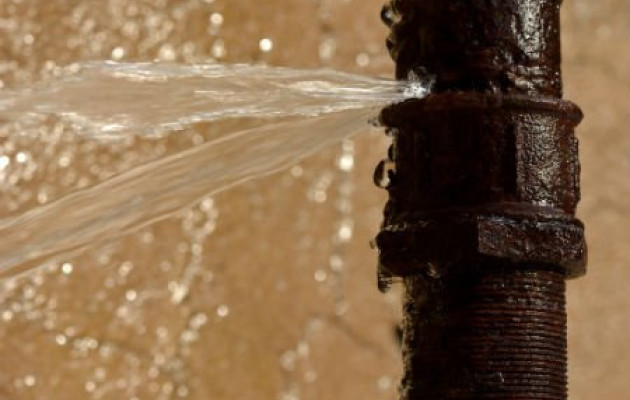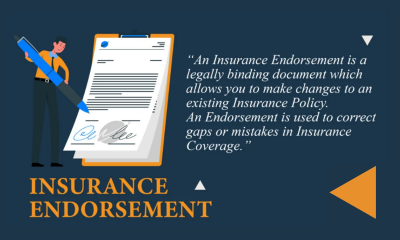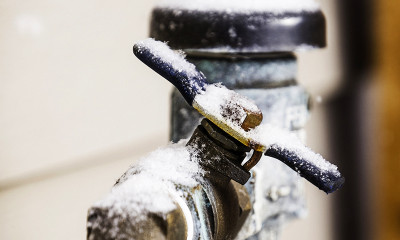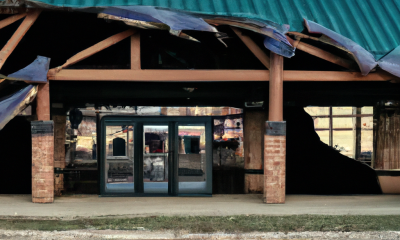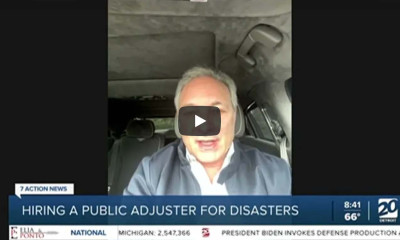In addition to record low temperatures throughout the Midwest, the recent polar vortex also brings with it the risk of frozen pipes in your commercial property. If left unnoticed, frozen pipes can be devastating to the structure of your building as well as the operation of your business. Though the time for taking precautionary steps may have passed, it is never too late to be attentive to the threat of frozen pipes, or to respond quickly should the threat become reality. This blog will share with you what steps need to be taken in order to keep the damage to your commercial property to a minimum.
Look Out For Warnings Signs
Pay attention to water flow.
One of the most telling signs of frozen pipes in commercial property is the absence of running water during the winter. If you receive complaints from anybody in your building about interrupted water flow, or notice this yourself, immediately consider frozen pipes as a possible cause.
Noticeably odd smells
The blockages on frozen pipes prevent water, air, and other materials from being transported away from your property. This means that unpleasant odors can often travel back to your property from these pipes. If you notice or hear about consistent strange smells on your property during the winter, investigate your pipes further.
Staining on ceilings/Damp drywall
As pipes thaw out, leaking or broken pipes will release water and damp drywall or wet rings on the ceiling are definite indicators that there is a problem. Water coming from drop ceilings or dripping from a ceiling that isn’t just below a roofline are other signs. Also look for puddles or places where water may be accumulating that it shouldn’t.
Sinkholes
Sinkholes in the yard could be a sign that there is a break in one of the main underground pipes.
Know the Risks
Frozen pipes present several risks to your commercial property and your business. These risks may start off as simply interruptive (unhappy tenants, decreased productivity, for example) and, if left unresolved, can grow to become a devastating problem. A burst pipe could lead to flooding, hundreds of thousands of dollars’ worth of damages or more, and a complex commercial insurance claim. If you suspect that your commercial property may be at risk for frozen pipes, do not rule out the worst-case scenario. Rather, remain as diligent as possible to prevent it from coming true.
Taking Action
Once you have ensured that the destructive event is over and your people are safe, you must notify your insurance company of the damage to your property.
Once you suspect that there are frozen pipes in your commercial property, the most important course of action is to:
-
- Act quickly to identify the extent of the damage and thaw out the pipes
- Work with a professional to prevent any further damage
- Know your insurance coverage
→ Frozen pipes are covered by most commercial property insurance policies, but consult your policy thoroughly, or have an experienced public adjuster review it for you;
→ If you do have coverage for frozen pipes, determine the policy limit to gauge what your financial responsibility may be; and
→ Be diligent about fulfilling all of your responsibilities throughout your insurance claim process as there are a number of obligations the insurance company places on you!
Conclusion
Frozen pipes in a commercial property can be a harsh reality during significant winter weather events. When freezing temperatures begin, the opportunities for preventative measures end. However, it is never too late to be attentive. Become aware of the telltale signs of frozen pipes and of the steps to take immediately if they are identified on your property. By doing so, you will minimize the damages frozen pipes threaten to bring to your commercial property and business.
If you feel you have a broken pipe and are considering or have made an insurance claim, please feel free to contact Stuart Dorf at 248-915-0399 or email sdorf@globemwai.com for further assistance.

